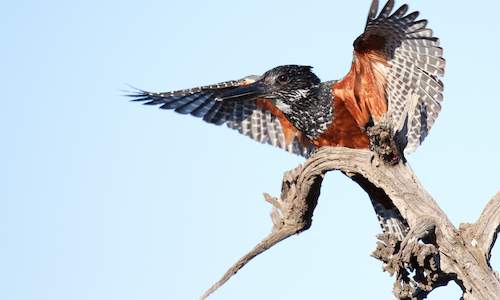
Johannesburg is the most powerful commercial centre on the African continent. Johannesburg generates 16% of South Africa's GDP and employs 12% of the national workforce.
It has a financial, municipal, roads and telecommunications infrastructure that matches leading first world cities, yet the cost of living is far lower. Johannesburg hosts every form of commercial activity from financial services to heavy industries and mining.
There's hardly a major international company doing serious business in sub-Saharan Africa that has not looked to Johannesburg as the gateway to the continent.
The older suburbs, are sited in rolling hills and have tree-lined streets, nature reserves, hiking trails and parks. It has been said that there is more trees in Johannesburg than in any other city in the world, making it the world's largest 'artificial jungle'. There are 1,2-million trees on Johannesburg's street verges alone. City environmental policy has for years forbidden buildings on hills, providing some 4 500 hectares worth of open veld in the form of 'koppies' inside the city. The mine dumps, artificial hills of golden sand left over from the mining process, also make for an unusual geographic feature on the southern flanks of the city.Gold Reef City
This stands out as one of the major landmarks of Johannesburg. Built at Crown Mines, the City has been designed to give the feel of what Johannesburg was like at the turn of the last century. You will find a number of fully furnished mining houses, museum exhibits, a hotel with staff attired in yesteryear gear, as well as quaint streets with penny whistlers. The biggest attractions here, is the 220 meters deep historic underground shaft, which held the World Shaft Sinking record in 1916 and was one of the richest gold mines in the world.Museums and Theatres
There are museums in and around Johannesburg; including the SA National Museum of Military History near the Johannesburg Zoo, the James Hall Museum of Transport in La Rochelle, SA National Railway & Steam Museum, Bensusan Museum of Photography, Bernard Price Institute Palaeontology Museum, Barnberg Fashion Museum, Museum Africa, and the Madiba Freedom Museum.Randburg Waterfront
Randburg Waterfront offers a relaxed harbour-like setting fringing a man-made lake fed by the Jukskei River. Restaurants, pubs, metro cinemas, entertainment areas, and a golf course, line the waterfront making it one of the best sites to visit in Johannesburg. Over 40 retail stores cater to every need ranging from casual to chic. There are lots of water sports like scuba diving and water skiing which visitors can partake in or just watch. The Randburg Waterfront is also famous for some of the most spectacular displays of liquid fireworks, musical fountains, and magic shows.Johannesburg Botanical Gardens
Covering an area of 365 acres - the Johannesburg Botanical Gardens is famous for its enchanting walks, amidst amazing gardens abound with nature's bounty. The biggest attraction within the garden is a 24 acre rose garden, believed to be the largest rose garden in the world. Other attractions include a bonsai garden, herb garden and Shakespeare garden.Johannesburg Zoo
The Johannesburg Zoo is a living classroom. For those interested in nocturnal wildlife, the park authorities offer a three hour tour which includes a short talk and slide show on the adaptations of night animals, a fun moonlight ride on the Zoo Ferry and short walks to visit the animals.Nearby Places of Interest
Strekfontein Caves
Lying west of Johannesburg, these caves are one of the world heritage sites. They are one of the richest and most productive paleoanthropological sites in the world. Among the most remarkable discoveries made here, Mrs Ples, the famous 2,5 million year old skull; the first complete Australopithecus ever to be found, is of significant importance. More recently 'Little Foot', a 3,3 million-year-old almost complete ape-man skeleton was also found in the same caves. More than 500 hominid (early man) fossils; thousands of animal fossils; over 300 fragments of fossil wood, and over 9000 stone tools, have been found at 12 sites in this area.Lesedi Cultural Village
If you want to get a taste of rural Africa and its people, Lesedi Cultural Village is the best place to go. Set between Johannesburg and Pretoria, it is a collection of traditional family units housing elders, wives and children from various southern African tribes.Nature and Game Reserves
The Pilanesburg Game Reserve is situated northwest of Johannesburg, near Rustenburg and is home to many different animals including Lions, Elephant, White Rhino, Zebra, Giraffe, Impala, Warthog, and Cape Buffalo, among others.Just thirty minutes drive northwest of Johannesburg lies the Rhino and Lion Nature Reserve. Set in the beautiful Kromdraai Conservancy, this nature's haven boasts of the White Rhino, Lion, Buffalo, Hippopotamus and more than twenty other species of game.

 The drive from Johannesburg to Kruger National Park is 4-5 hours long. The quickest route to Kruger Park from Johannesburg is 392 km via the...
The drive from Johannesburg to Kruger National Park is 4-5 hours long. The quickest route to Kruger Park from Johannesburg is 392 km via the...